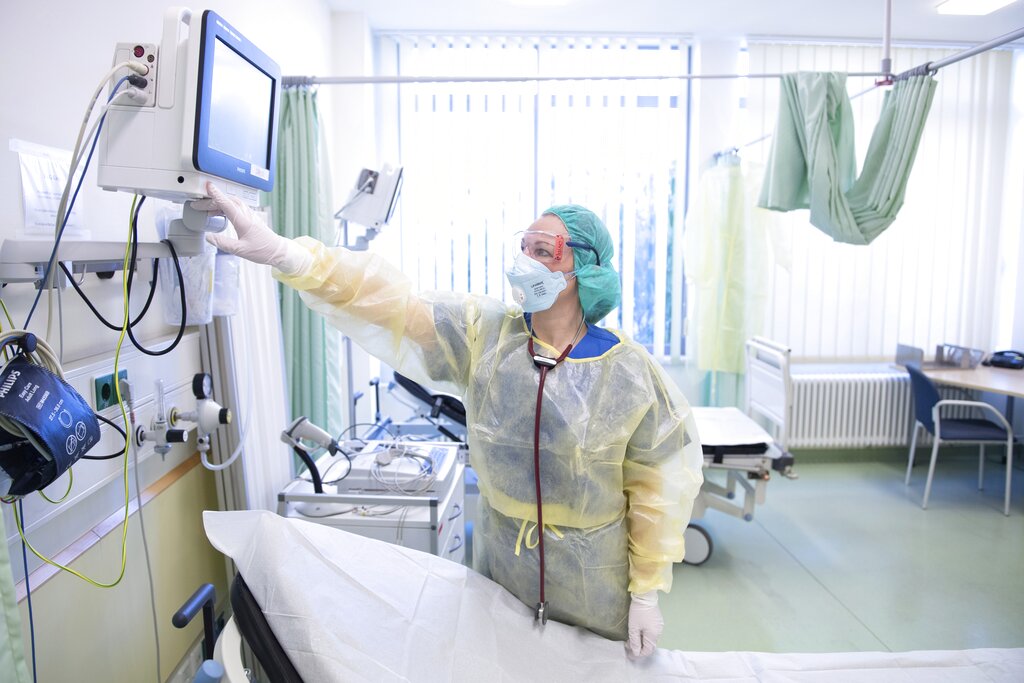Across western Europe, health care professionals have used the language of war to describe the struggle against the coronavirus, which has left some hospitals on the brink of collapse.
And health care workers are the soldiers on the front lines.
Out of Spain’s 40,000 confirmed coronavirus cases, 5,400 — nearly 14 per cent — are medical professionals, the health ministry said on Tuesday. No other country has reported health care staff accounting for a double-digit percentage of total infections.
But the problem is widespread throughout Europe. In Italy, France and Spain, more than 30 health care professionals have died of the coronavirus, and thousands of others have had to self-isolate.
In Brescia province, the centre of Italy’s outbreak, 10 to 15 per cent of doctors and nurses have been infected and put out of commission, according to a doctor there.
In France, the public hospital system in Paris has tallied 490 infected staff members, a small but growing proportion of the system’s 100,000 or so employees.
The same dynamics are starting to take hold in Britain and the US, where the contagion is bearing down but has yet to fully bite.
At the La Paz hospital in Madrid, one of the largest in Spain’s capital, 426 employees — 6 per cent of the medical staff — are isolated at home, after testing positive or showing possible symptoms of the coronavirus, according to internal numbers provided by a labour union that represents doctors in Madrid.
At the smaller Igualada hospital in Catalonia, a third of the 1,000 hospital staff has been sent home.
“The virus was already among us when we were really only testing those who came from Wuhan and then from Italy,” said Ángela Hernández Puente, a doctor who is the deputy secretary general of the doctors’ union. “Some of our doctors unfortunately worked without adequate protection and acted as vectors.”
As doctors, nurses and other practitioners fall sick, the burdens increase on health care systems already groaning under the strain of an expanding epidemic. And infected workers and their hospitals are increasingly being recognised as vectors for the spread of the virus.
The number of cases in Spain has been doubling every four days, and the country is fast shaping up as Europe’s next epicentre of the contagion. On Tuesday, Spain’s coronavirus toll reached 2,700 dead, the second-highest in Europe after Italy.
In Madrid, the focus of Spain’s outbreak, so many are dying that bodies are being placed in an Olympic-sized ice skating rink that has been converted into an emergency morgue.
In some retirement homes, soldiers deployed to disinfect the premises found elderly people abandoned, or dead in their beds, prompting Spain’s public prosecutors to open an investigation.
It has not helped that Spain’s population, on average, is among the world’s oldest. But the government was also late to impose restrictions on the movement of people.
Even as a tragedy unfolded in northern Italy, mass events went ahead earlier this month in Madrid, and the government waited until March 14 to declare a state of emergency that has since forced people to stay indoors, barring exceptional circumstances.
Spain also did not shore up its stock of medical equipment early on. Doctors and nurses have had to work with a dangerous shortage of masks, gloves and other essential gear that has proved disastrous for them.
The grim situation has left many of Spain’s health care professionals overwhelmed and pleading for more equipment, doctors, nurses and ambulance crews have told The New York Times.

